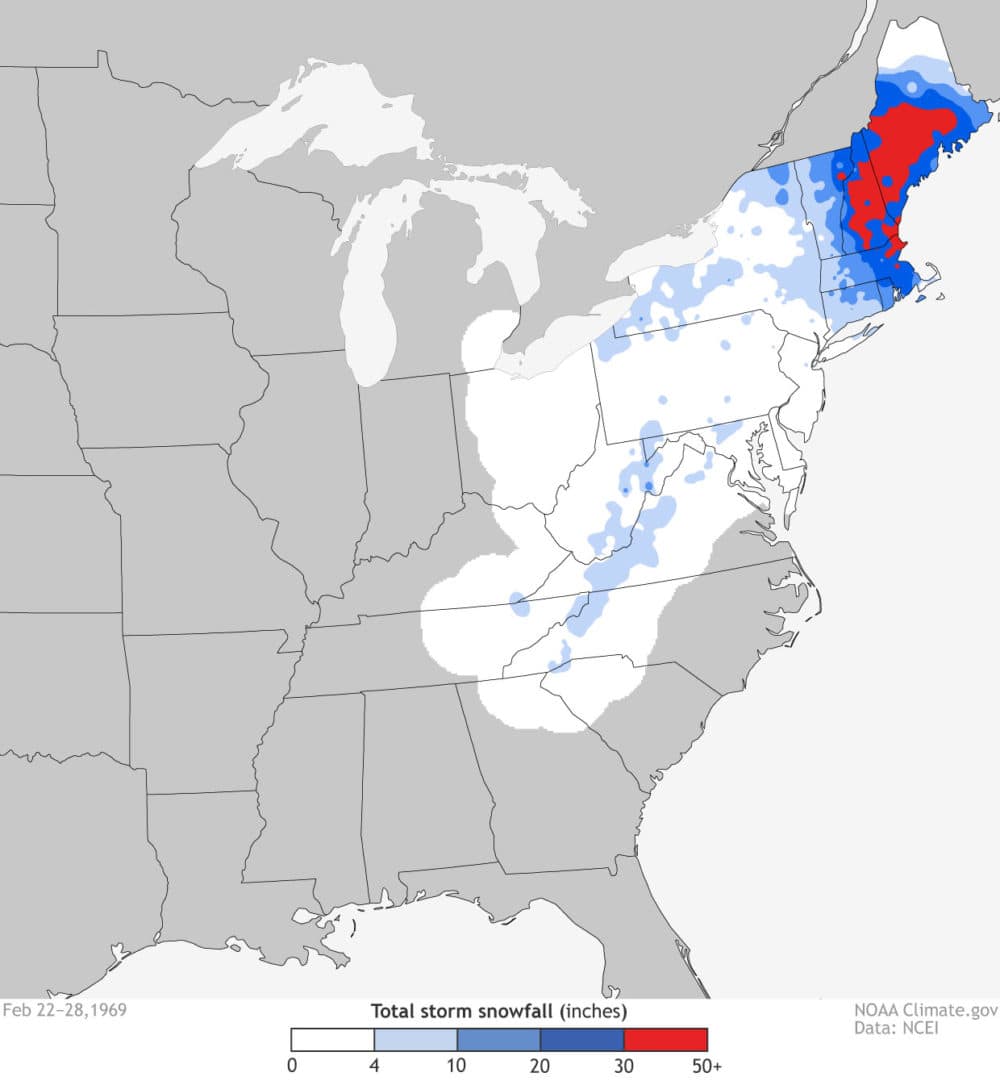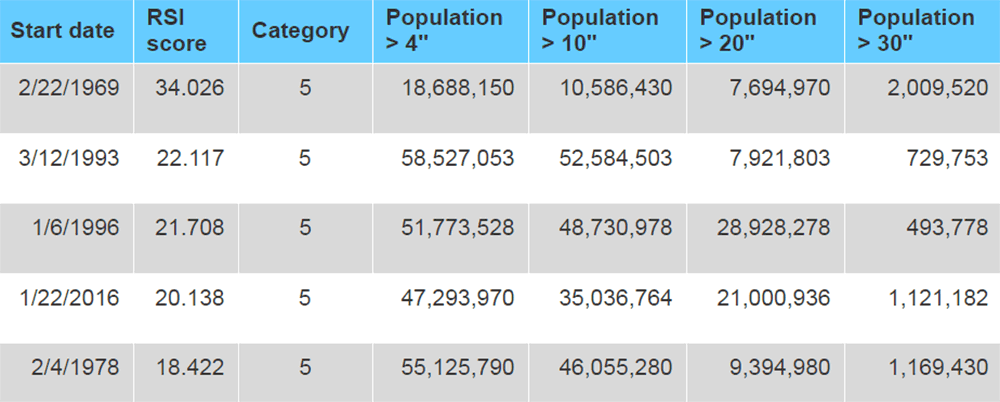Advertisement
Commentary
50 Years Ago, It Snowed For 4 Days Straight. Just Think Of The Hype If That Happened Now

Allow me to set the stage for the storm that was forming 50 years ago. Around Boston, snow began early on Feb. 25, 1969, and then continued unabated for 100 hours until the afternoon on Feb. 28.
When it was over, 26.3 inches of snow had been recorded. Think about that for a moment: It snowed for more than four days straight.
Five decades ago it was all but impossible for forecasters to realize the storm would last so long. Meteorologically, low pressure became stalled off our coastline. This allowed precipitation to fall for days. In the end, the heaviest snow was concentrated from northern New England southward, to a band of heavy snow over the eastern half of Massachusetts and into Rhode Island.

This anniversary got me thinking about how a storm like that would be handled in today's clickbait world of social media. As someone who uses social media extensively to report about the weather (and gardening), I'm grateful for how this medium has changed the way scientists are able to tell the public about various subjects — foremost the weather.
But this type of communication, while helpful for public safety, can spread misinformation about a forecast and fuel hype and anxiety around an impending storm.
Winters Of The Past
Fifty years ago, winter was something we all dealt with as the snow and cold arrived. When it was over, the snow melted and spring arrived. Back then, there wasn't the ability to know what was ahead more than a few days, at best.
There is a saying that "ignorance is bliss." I think about what it would be like today if we just didn't know so far in advance that there might be a storm on the way. What impact is all the hype about weather doing to our psyche?
Responsible Forecasting
Meteorologists use computer models and therefore we can “see” that there might be an impactful storm a week in advance.
On a personal note, once I start conveying information about a storm, my own anxiousness increases. I think, am I going to be right? Have I properly conveyed the scenarios clearly? Was I too forceful or not forceful enough? When do I update information? And on and on. This chatter in my head continues until the storm is over.
Social media may also increase the anxiety of those who assume they'll be affected by a storm. They might ask, will work be cancelled? What about the power? Is that tree going to come down? Will Logan be closed? Do I need coverage for the kids?
Sometimes, bad information is put out there. Earlier this winter, I saw a meteorologist post an image from a model that had over 40 inches of snow in Boston — over a foot more than any previous storm and eminently improbable. The meteorologist said it was likely not going to happen, but once that information is out there, it does something intangible. Careless misinformation can spread quickly, and the consequences of how it makes each of us feel can't be taken back.
Unfounded Anxiety
What is the cost of all this noise? You might be thinking it’s no big deal, but I suspect the heightened sense of some large weather event changes how we interact. This can be seen on the roads, in stores and in the workplace.
One of the more visible signs a storm is coming is in the supermarket. Hoards of people buy unnecessary food because of some unfounded fear. While I wasn't shopping for bread and milk back in February 1969, during the 100-hour storm, I bet there wasn't the craziness we see today.

A 4-Day Storm Today
I can't imagine what would happen now if we started talking a week in advance about four days straight of snow. The disruption to people's lives before the event would be almost as great, if not greater, as anything that would occur during the storm itself. The hyperbole around what might be coming would be off the charts. Snowmaggedon, Winterpocalypse, Flakegate. Newspapers and TV and radio stations would be leading with the storm for days. Some people would reach incorrect conclusions about how this storm would be proof the climate was or wasn’t changing.
Are We Experiencing Or Commenting?
In today’s world, the collective experience of a storm often occurs virtually. People start posting comments, pictures and videos. Reporters stand in snow, touch snow, measure snow; it's as if they are showing us something on a distant planet we’ve never seen. Taking a photo of the kids sledding is great, but when we try to capture every moment on our phones are we missing something, or is this just how we pass the hours of a storm? Are we missing so much of winter’s best because we’re collectively caught up in cataloging it? How is the media itself portraying the storm, and is it accurate to how the general public sees the storm? I feel like there is often a disconnect from what the headlines say to what is actually happening.
Living In The Moment
There are four seasons in New England and each of them comes with a variety of weather. I think it would do us well to try to maintain a bit of childlike wonderment and awe about the seasons, especially winter. Somehow the years that pile up after our childhood bury the enthusiasm many of us felt for winter. No matter how hard we might try not to get swept up in the flurry of anxiety around a storm, it seems to capture most of us in a whirlwind of consternation.
Winter happens, snow falls, cold changes our wardrobe, but winter need not be the season of trepidation. Social media can be a great way to communicate, just don’t get lost in all the noise.
Maybe we need to carve out more moments of being present and appreciating what nature brings. This will decrease the anxiousness and allow us to embrace what lies ahead. It’s going to happen anyway, and all the bread and milk you can buy won’t stop it — even if it snows for 100 hours.
